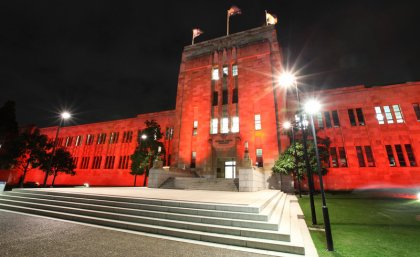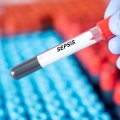
UQ’s Forgan Smith Building will be bathed in red light for the fourth year in a row, to raise awareness of Multiple Sclerosis.
Multiple Sclerosis is the most common chronic neurological disease, affecting more than 23,000 young Australian adults.
The incurable disease attacks the brain and spinal cord, causing irreparable damage.
Researchers at the UQ Centre for Clinical Research (UQCCR) and the School of Medicine are working to understand the cause of MS and are developing new ways to treat the disease.
Dr Judith Greer from UQCCR said the research focused on how and why certain self-reactive antibodies could hasten the progression of MS.
“This research suggests that we might eventually be able to markedly reduce progression of the disease in some people by just removing the antibodies that target a protein called proteolipid protein,” she said.
“The benefit of such an approach would be that it would reduce unwanted side-effects on the rest of the immune system.
“In addition, work from Professor Michael Pender’s group in the School of Medicine examines the role of the common Epstein-Barr virus in MS, and may help to explain why these self-reactive antibodies are produced in the first place.”
UQ Property and Facilities Division Maintenance Manager Contracts Glenn Vickery said UQ would switch on the red floodlights on the northern side of the Forgan Smith Building on Wednesday 27 May.
“UQ has been a ‘Red Supporter’ for many years,” he said.
Other sites lighting up to raise awareness are the Story Bridge, the Kurilpa Bridge, the Wintergarden, the Gold Coast Skypoint Observation Deck and the Toowoomba City Hall.
Donate to MS research at http://www.kissgoodbyetoms.org/.
Media: UQ Communications, 3365 1130 or communications@uq.edu.au.











